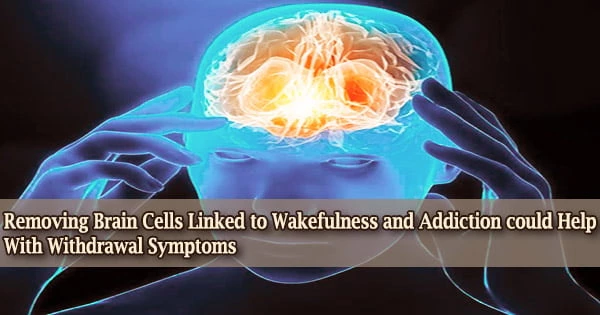The removal of chemical messengers in the brain that are involved in both wakefulness and addiction, according to a UCLA study in mice, may make opiate withdrawal simpler and possibly avoid relapse.
In 2000, UCLA sleep researchers discovered that a loss of roughly 90% of the 80,000 brain cells containing hypocretin (also known as orexin), a chemical messenger important in the regulation of sleep and wakefulness, causes human narcolepsy, a condition in which people are overwhelmed with daytime drowsiness and sudden attacks of sleep.
Typically, narcolepsy patients are treated with medications that would be very addictive in most individuals, yet these patients show few, if any, signs of drug addiction or withdrawal.
The lack of hypocretin-producing neurons and addiction seen in narcolepsy took on a new twist nearly two decades later, when researchers discovered that people addicted to heroin (a commonly abused opioid) have 54 percent more hypocretin-producing neurons on average than people who don’t have a substance abuse disorder, and mice confirmed the same finding.
When they stopped giving the mice opioids, they discovered that the spike in hypocretin maintained, lasting up to four weeks.
This finding revealed that persistently elevated hypocretin levels may play a role in drug cravings while also explaining why narcoleptic individuals with few hypocretin-producing neurons show little, if any, evidence of addiction.
While further human research are needed to corroborate these findings, they suggest that creating medications that target the hypocretin system could aid in the treatment of addiction.
The UCLA researchers discovered that using opioids to increase the number of hypocretin-producing neurons in mice led in an increase in hypocretin levels in the locus coeruleus (LC), a brain location known to play a key role in controlling opioid withdrawal symptoms.
Furthermore, they discovered that elevated levels of hypocretin in the LC were directly linked to higher levels of an enzyme called tyrosine hydroxylase (TH), which is responsible for the production of norepinephrine (NE), a naturally occurring neurochemical in the body.
Arousal, wakefulness, attention, and the ‘fight or flight’ stress response are all stimulated by NE, which is produced by neurons in the LC and distributed to other areas of the brain.
When opioids are removed, the LC’s activity skyrockets, causing more NE to be released, which is commonly regarded to be a major contributor to opioid withdrawal symptoms. As a result, the researchers anticipated that removing hypocretin-producing neurons might reduce withdrawal symptoms in rats.
Their findings supported this theory, demonstrating that the absence of hypocretin-producing neurons reduced both physical and emotional symptoms of opiate withdrawal while also halting the increase in TH levels in the LC.
Drug therapies that modulate the synthesis of hypocretin may be a viable treatment for opiate addiction and withdrawal, based on the reduction of withdrawal symptoms in mice lacking hypocretin generating neurons.
















